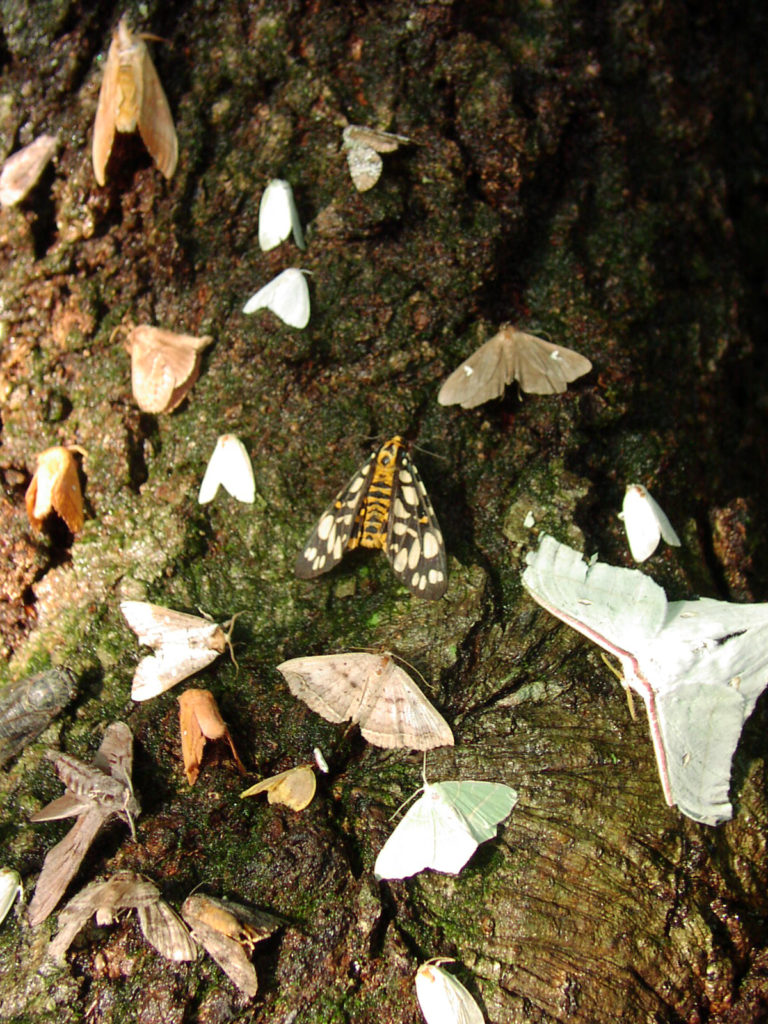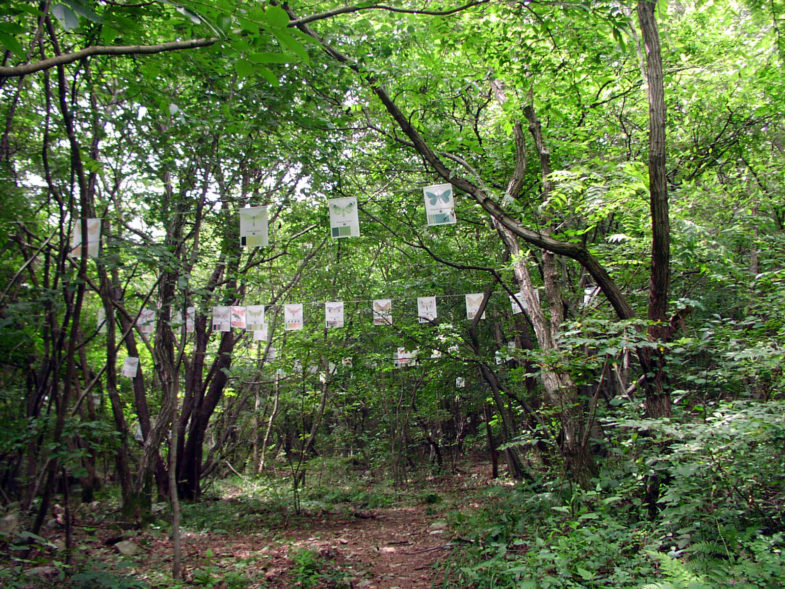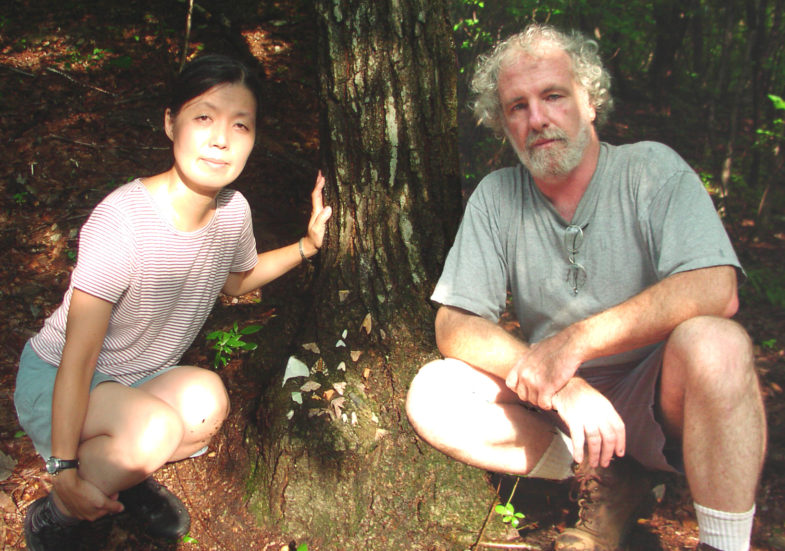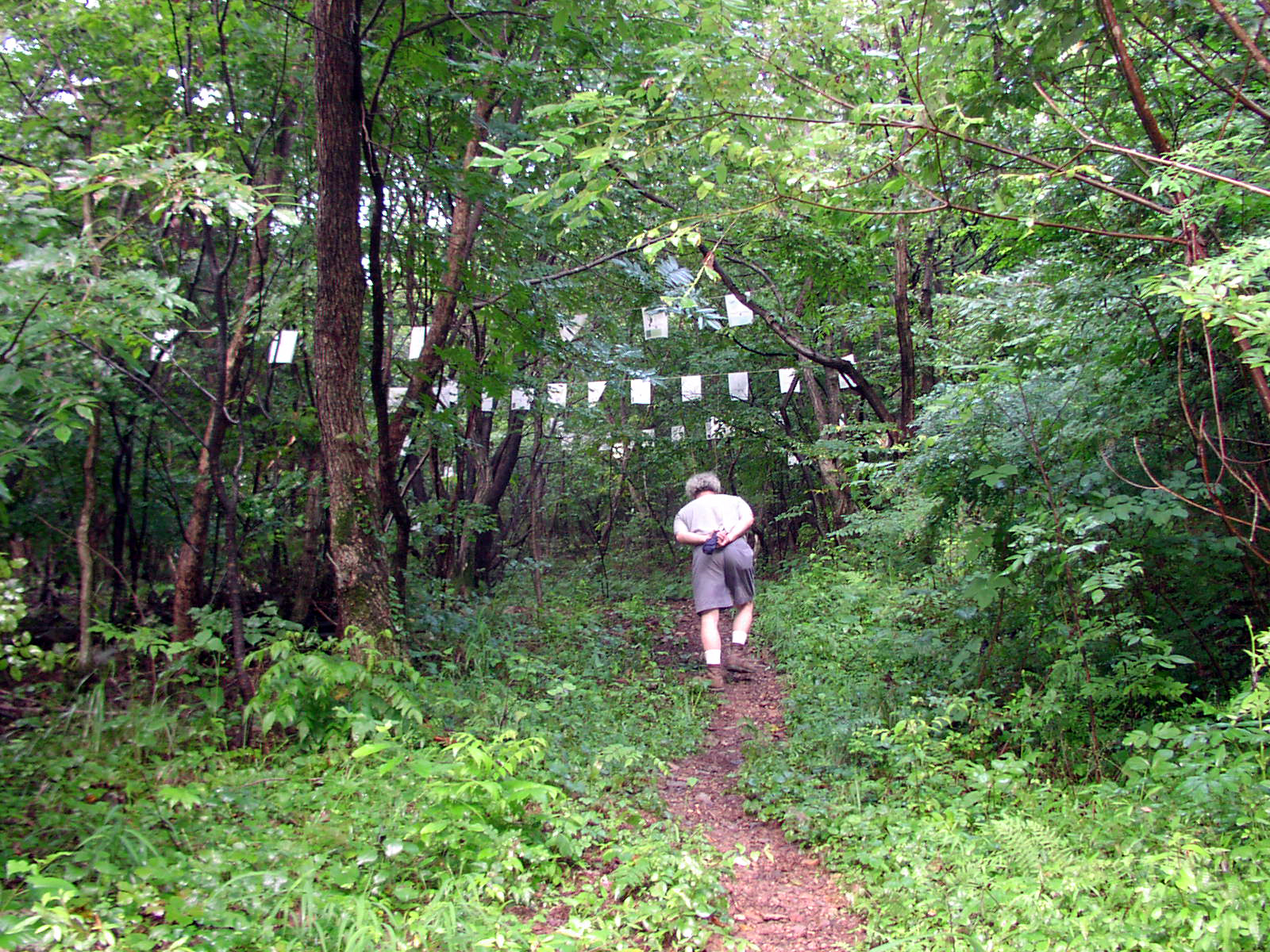R.Goto and T. Collins, Geumgang Biennale, South Korea,
Curator Anke Mellin Asked to develop and deliver a work for a forest in the hills of South Korea,
Goto engaged Dr John Rawlins an entomologist and senior curator at the Carnegie Museum of Natural History, who managed a collection of Asian Lepidoptera.
2004
Download the Geumgang PDF Poster
Annyong Haseyo!
The project was driven by three principles; first we saw the forest moths of the Kongju region as a metaphor of forest spirit. Secondly as we were outsiders we intended no harm. Finally we sought to make work that would instigate and sustain a dialogue while respecting the social, ecological and hydrological conditions of that place. The work in the forest consisted of hundreds of small flags suspended from over 100 trees in a small valley. The artistic intention was to encourage a landscape experience that linked the life cycle of moths to specific trees in the forest of Kongju. Each flag displayed a detailed image of a moth (chosen by Dr Rawlins); printed in water based inks on light fabric. Each image includes a visual analysis of color patter and the Latin name printed in black ink. The flags were attached to trees ,which sustain the larval form of the depicted moth. The work disappears over time, the flags lose their color and the natural materials decompose.

Poetics The forest moths of Kongju, are a metaphor for spirit.
We Intend to do no harm to this place, we seek to engage a forest community, to instigate and sustain a dialogue. We try to respect the social, ecological and hydrological constraints of the place. Our goal is to create artwork that functions as interface rather than artifact. We seek to compliment human expression through creative inquiry, and to encourage the restoration of human culture in relationship to ecosystems.
Our Study We spent months working with Dr. John Rawlins, studying the moths of S.Korea at the Carnegie Museum of Natural History. We were seeking to know and act upon the ecological relationship between trees and moths in the forest.
Details of the Performance
A reading of BREATH by Birago Diop
for the Geumgang Nature Art Biennale
Organized by YATOO, in Gongju, South Korea
Curated by Anke Mellin
Artists
Tim Collins , USA and Reiko Goto, Japan, with,
Soon-im Kim, South Korea, and Shai Zakai, Israel
Place

Gongju Communication Arts College in Kongju, South Korea .
A small wooded mountain valley, with small streams.
Date
August 16, 2004 , the opening of the exhibition and the beginning of the new semester at the university. A classical musical event was planned.
We planned a performance with moths. We carefully prepared a light trap, which would attract but not harm the moths of the forest. We chose this night creature because its life cycle was related to the plants in the forest. The forest was once heavily logged by the Japanese who occupied Korea . Native oaks and pines have returned, amid the introduced species in the area. We felt reading his poem out loud would make an engagement a physical and spiritual interface between people and the forest.
We asked Soon-im Kim and Shai Zakai to join the performance , and translate the poem into their languages . The performance occurred in the Korean, Japanese, Hebrew, and English languages.
At 6 A.M. , on the day of the performance, it was clear that a typhoon was coming.
At 6 P.M , the rain had begun. I asked myself, “Can we still use the light trap?” Moths will never show up in this weather. I did not see the value of the performance without them.
At 8 P.M. , the rain was pouring. The new semester celebration event was already in progress, despite the pouring rain. The audience was captivated by the classical music concert, as the rains poured and the night set in. Soon-im and I spoke to the curator about the rain, we decided with her to cancel the performance. As we walked back to the performance site to tell our friends, the announcer spoke, and Soo-nim screamed, “They just announced our performance.” We started running.
At 9 P.M. , as people started to walk toward us, I had to decide very quickly about the performance. The screen was drenched, and the water was seeping through it. But, the raindrops hit the surface of the light below, and created concentric patterns on the screen. It looked like a well of light and shadow. Then I saw a tiny moth fly into the center of the well, and it stayed there. How could this be possible? I heard hundreds of cicadas singing in the rain. The rain was no longer a problem its rhythm on our bodies and the leaves of the forest let us concentrate and focus. We were ready to begin.
Tim spoke to the audience in a very loud voice, “ Annyong haseyo!” (Hello in Korean.)
He turned and spoke to the forest the same way. We then began to read the poem one by one in Korean, Japanese, Hebrew, and English. Our voices were trembling, the rain was pouring. The words of the poem were fading…

